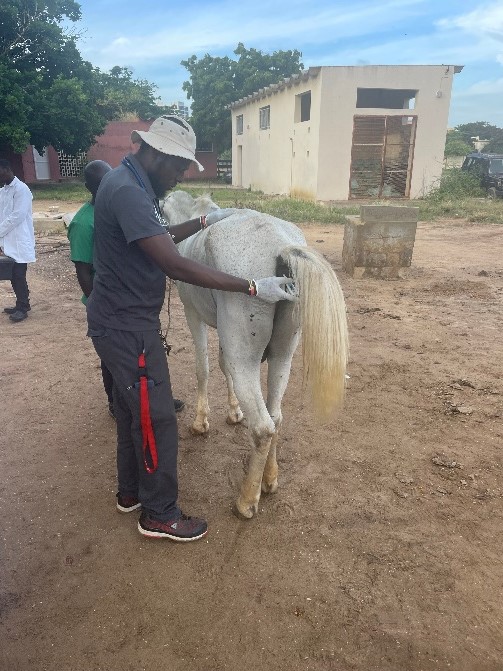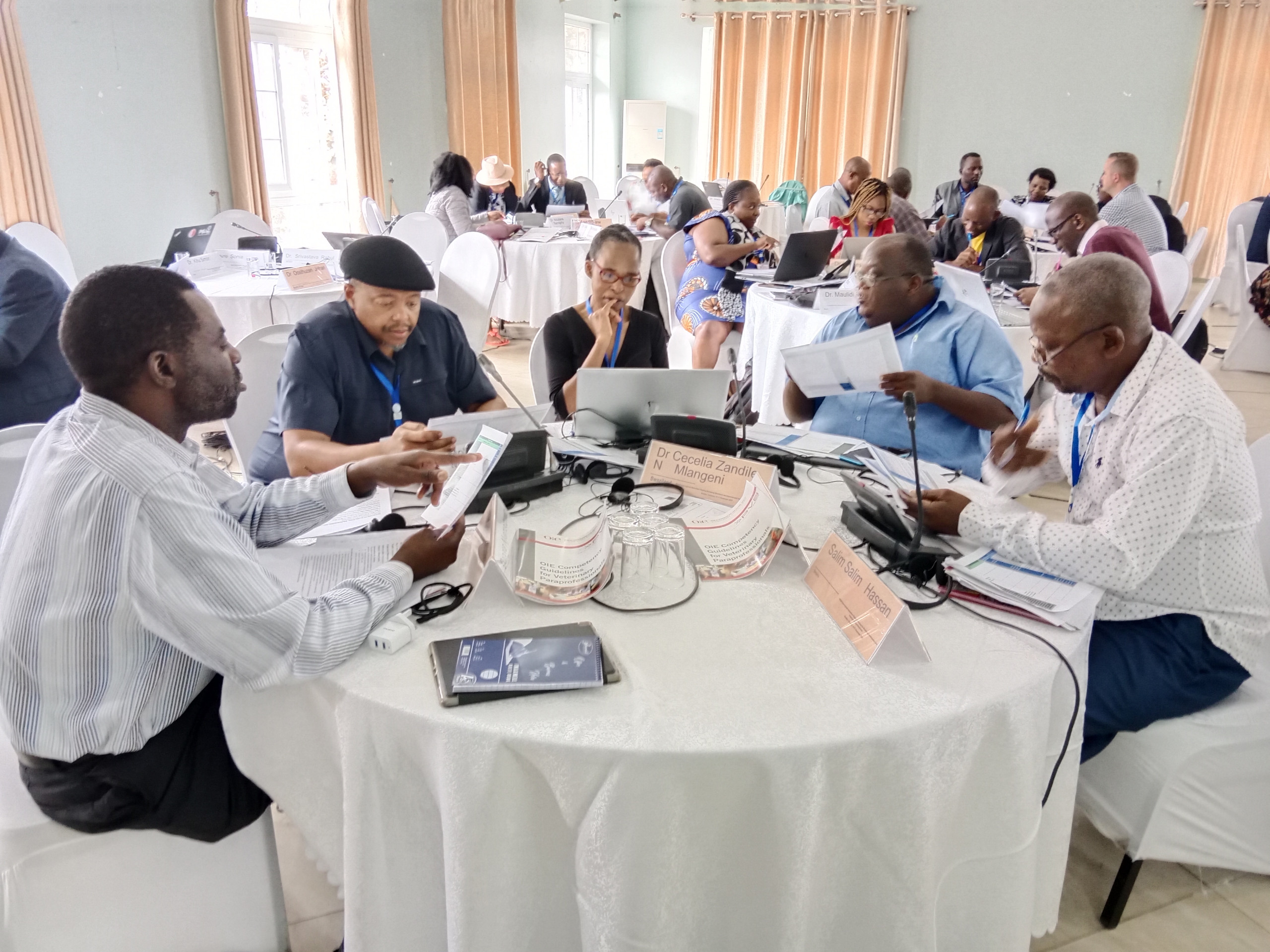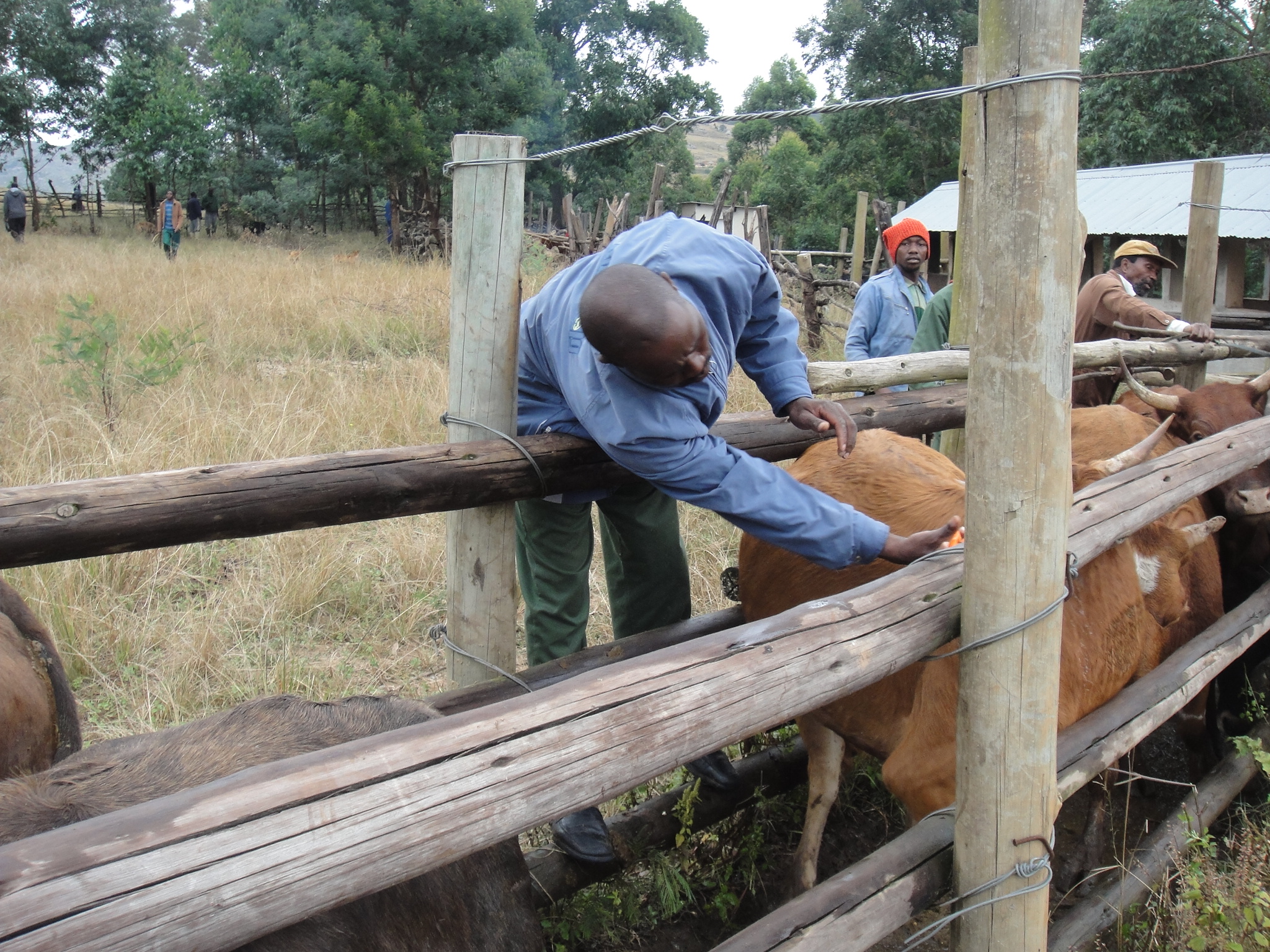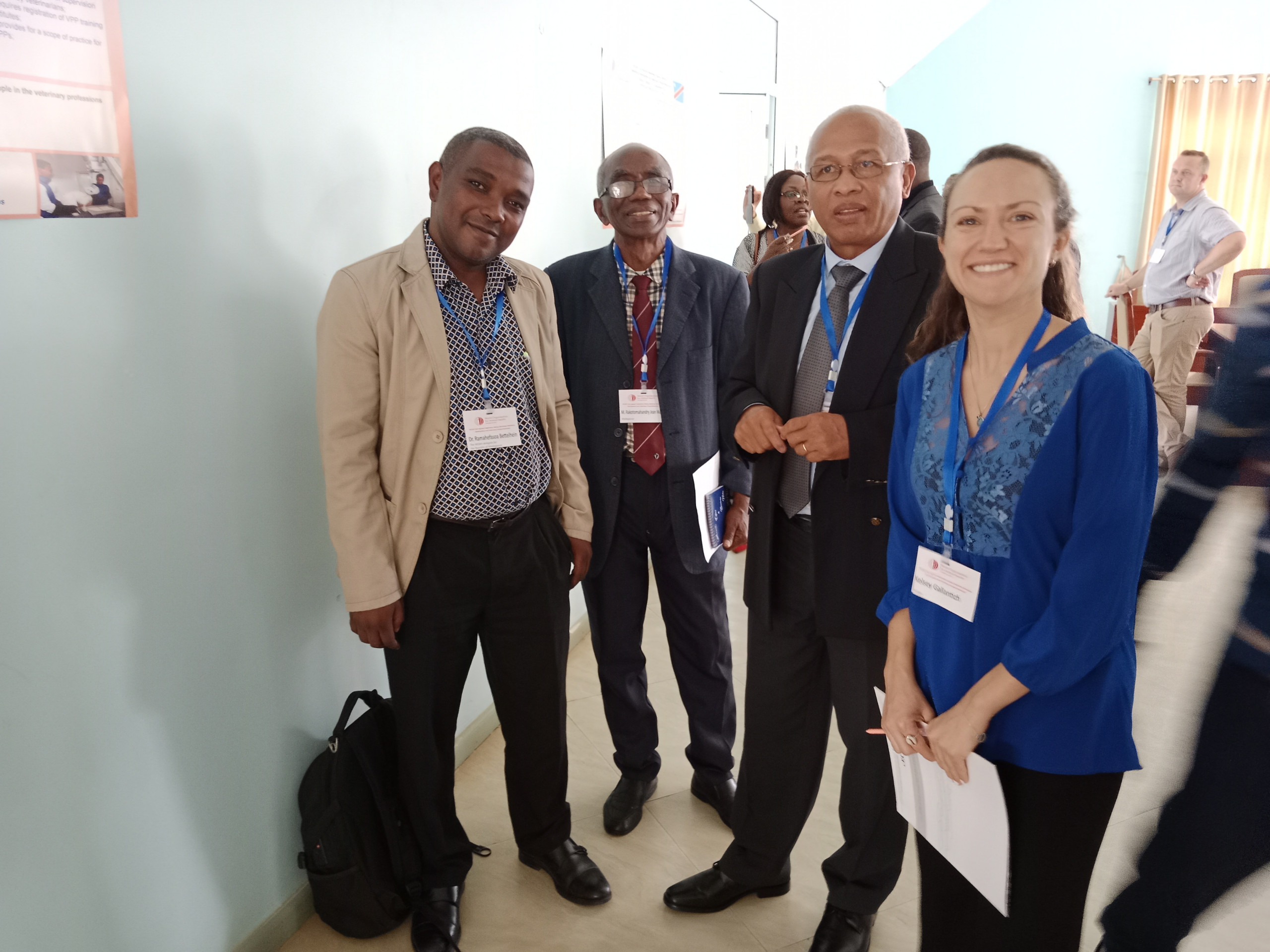
A healthy and resilient workforce includes personnel with appropriate training and competencies distributed across the territory and able to deliver the essential functions of Veterinary Services.
However, many countries lack the financial resources, training capacity, and economic opportunities needed to produce, deploy, and sustain an adequate number of veterinarians in the field. In such cases, the veterinary workforce can benefit from a diverse range of personnel with appropriate training for the variety of tasks that are required. The veterinary workforce can include veterinarians, veterinary paraprofessionals, and, when appropriate, community animal health workers.
Picture (c) D. Rono (woah) 2022
The gallery walk was an engaging session in which participants had the opportunity to display posters from their respective countries to other participants from different countries. The comparison of veterinary workforce numbers, training, and legal frameworks set the stage for a highly interactive and deliberative session.
Kelsey Gallantich (WOAH) joins the Madagascar delegation at the gallery walk. Picture © D.Rono (woah) 2022
WOAH encourages members to systematically assess their veterinary workforce needs and realistically address them within the limits of the financial, human and educational resource constraints that may be facing.
In recognition of these efforts, WOAH is delivering the PC-TAD project. Several activities are included in the project that could help members in the process of improving their human resource capacity in the veterinary domain to strengthen Veterinary Services.
The Project for the Prevention and Control of Transboundary Animal Diseases – (PC-TAD) Project is being implemented in selected countries of the focus region of the BMZ Special Initiative ‘One World-No Hunger’ with a particular focus on eastern Africa and benefits smallholder farmers in predominantly rural areas. Through this Project and through improved animal health, food security, wellbeing and welfare, lives of the beneficiaries will be improved.
Better understand the elements contributing to an enabling environment for effective integration of different cadres of personnel in the workforce through.
Gaining awareness of WOAH capacity building in support of veterinary workforce development, including through the PVS Pathway and use of VPP competency and curricula guidelines and support for public-private partnerships
The Shoatlandia exercise allowed one to 1. Assess and analyse the data provided and the scenario provided 2. Use standards applicable to Veterinary requirements VLU. Even then, understand the difference in having all the data, as the standards are different for mixed commercial farming compared to single agricultural farming enterprises. 3. I found it interesting as elicited heated debate in our group and allowed maximum participation by all group members. 4. The end results, showed, where there was a deficit of both Veterinarians and VPPS and where there was an excess. 5. The issue which has not been clarified is where the VLU standards are taken from, and this is critical for reference purposes” – anonymous
Anonymous





